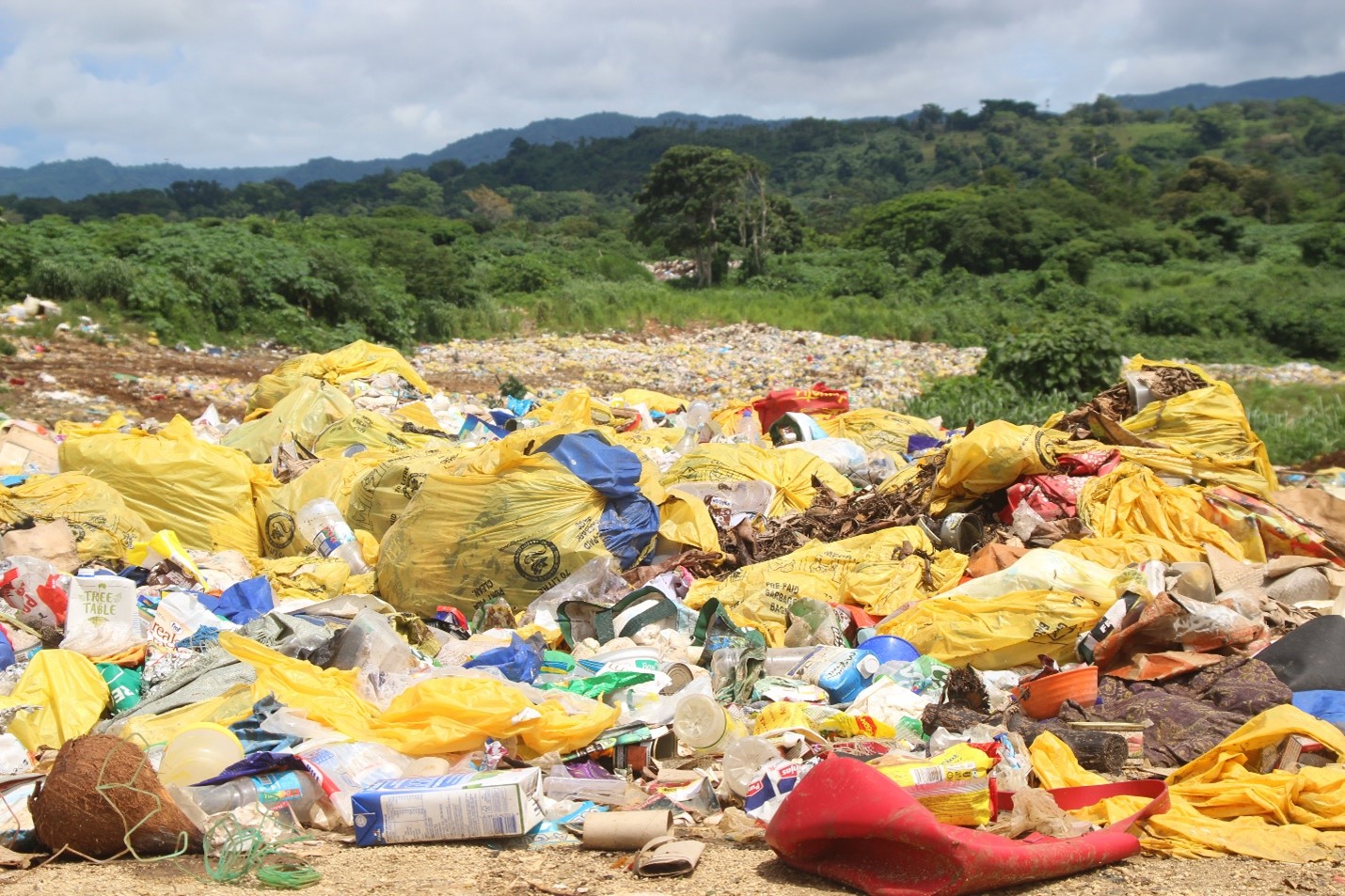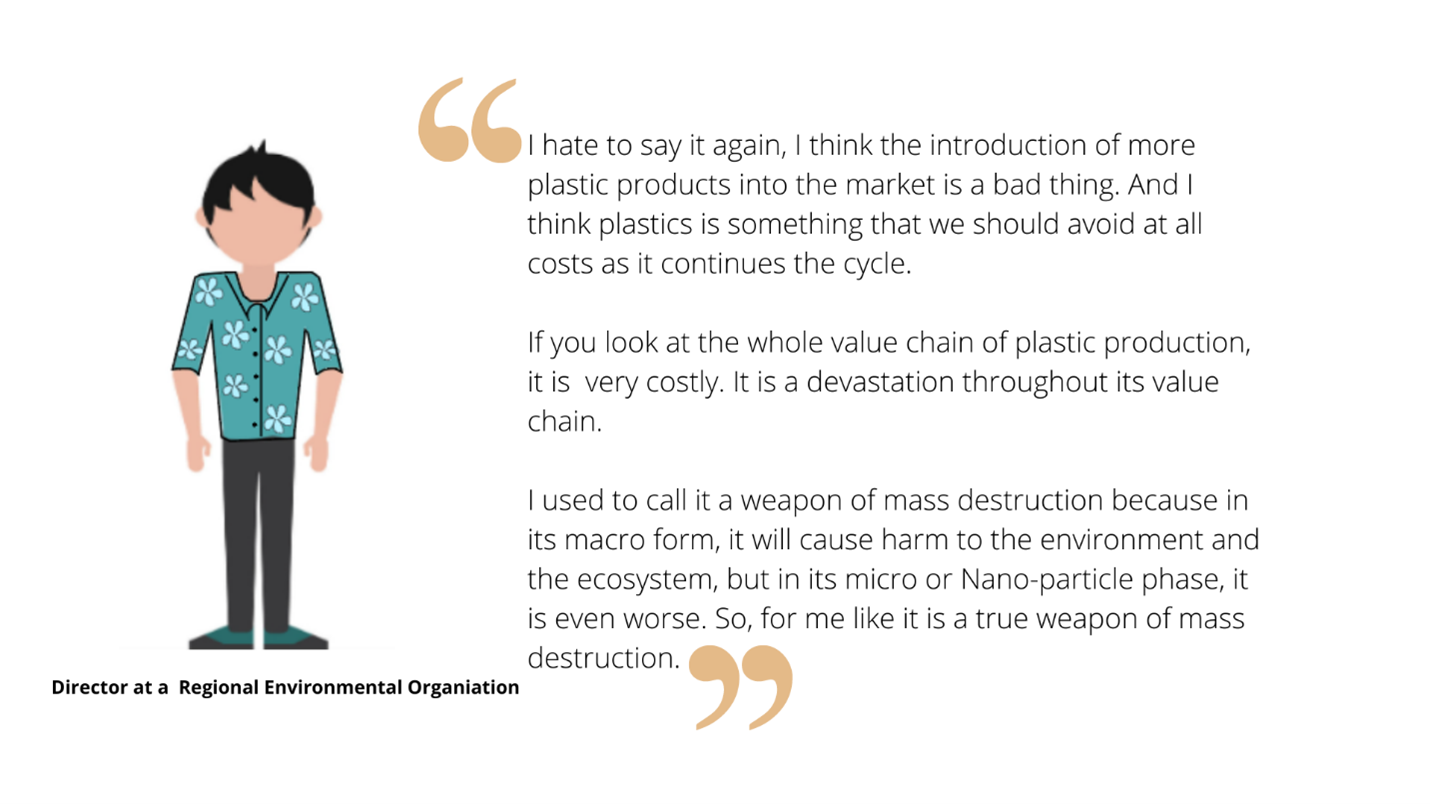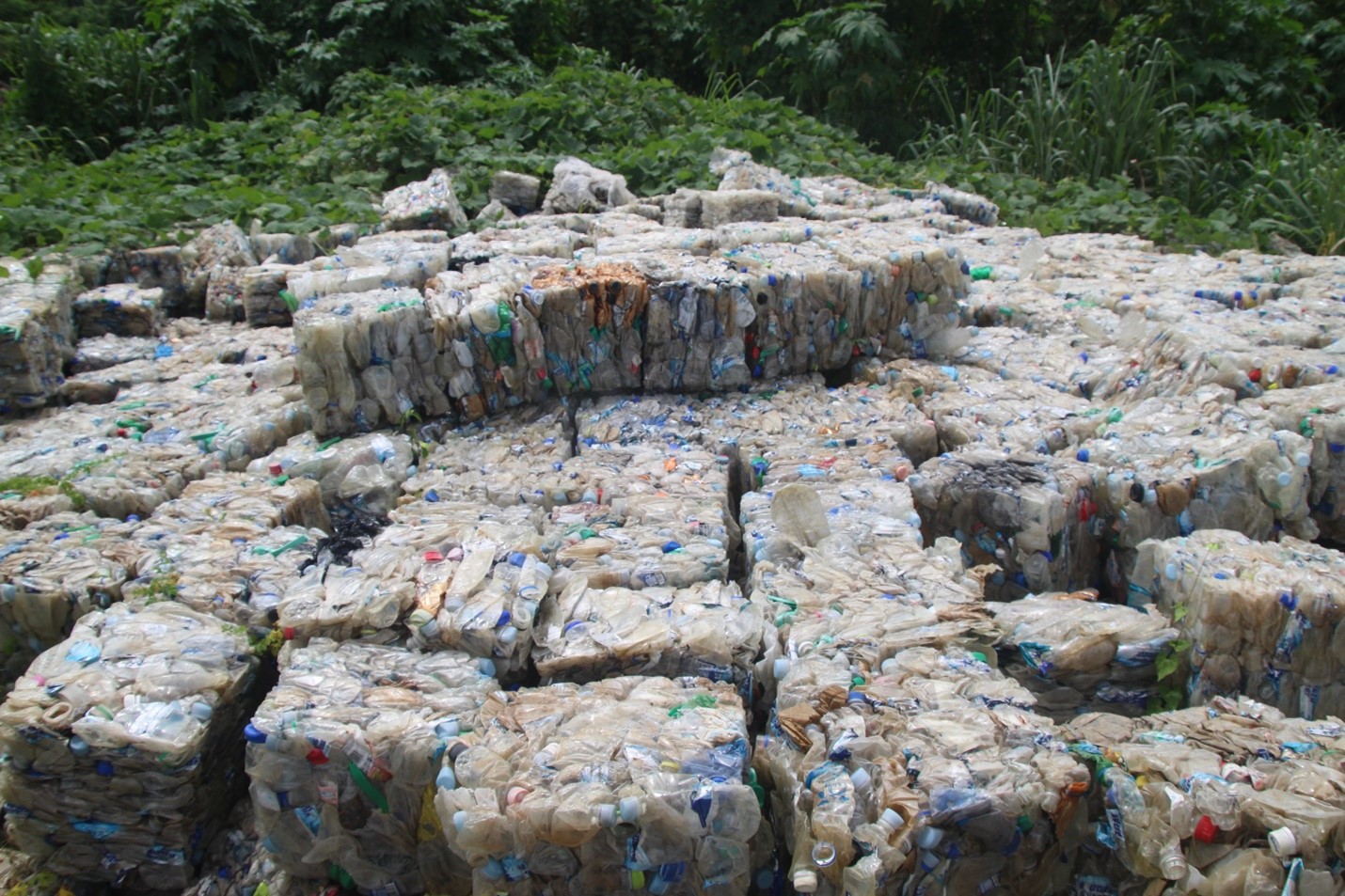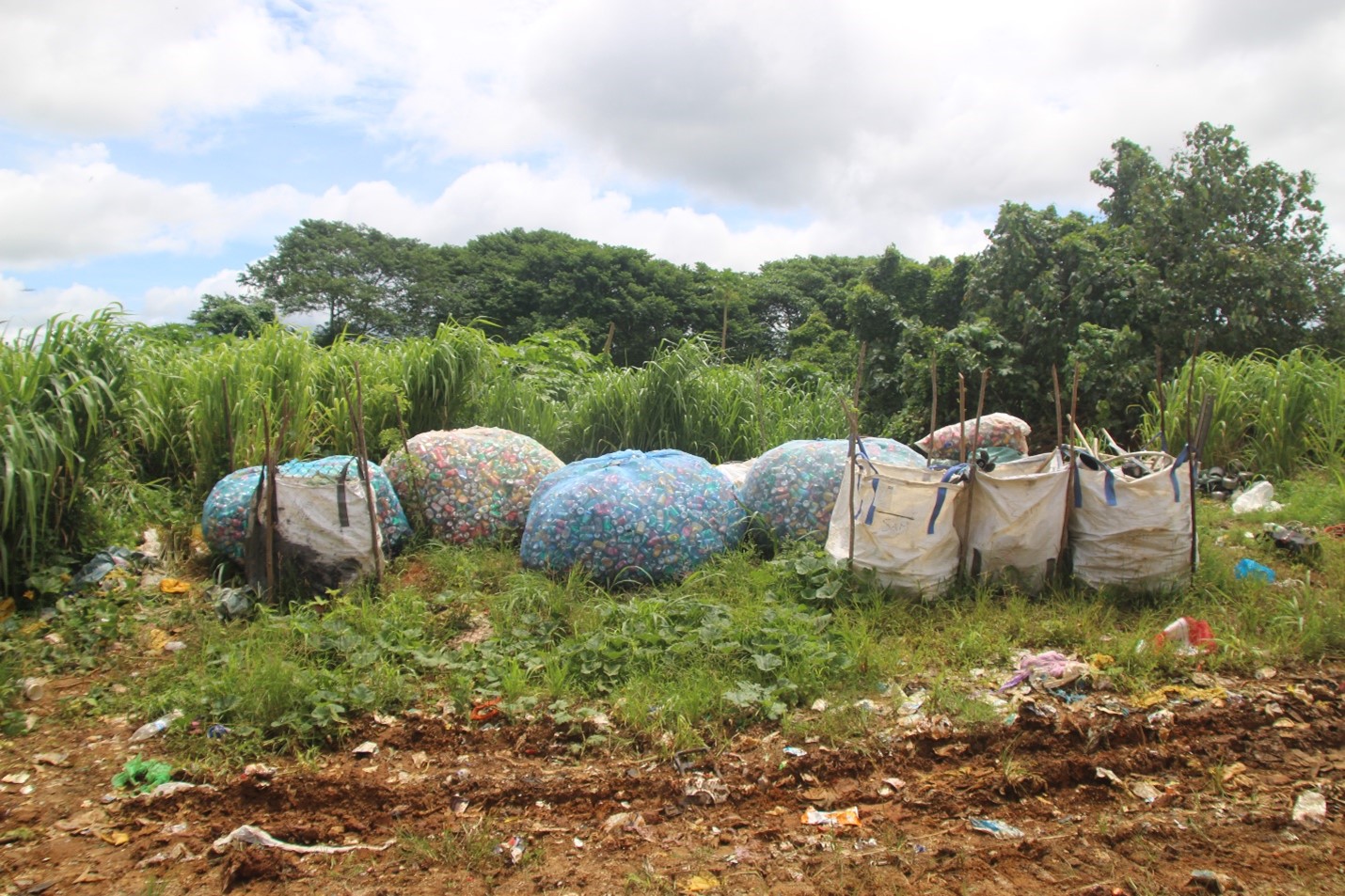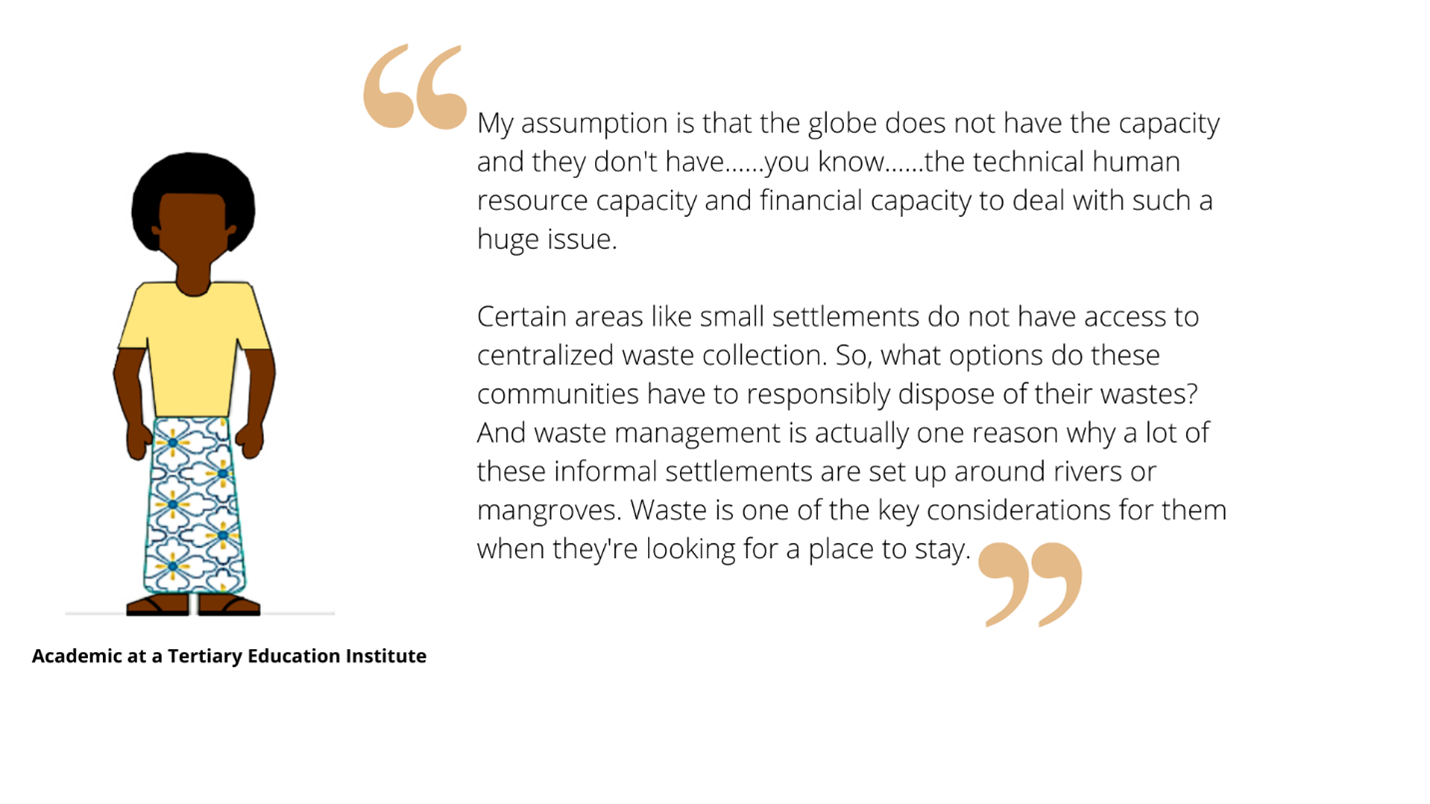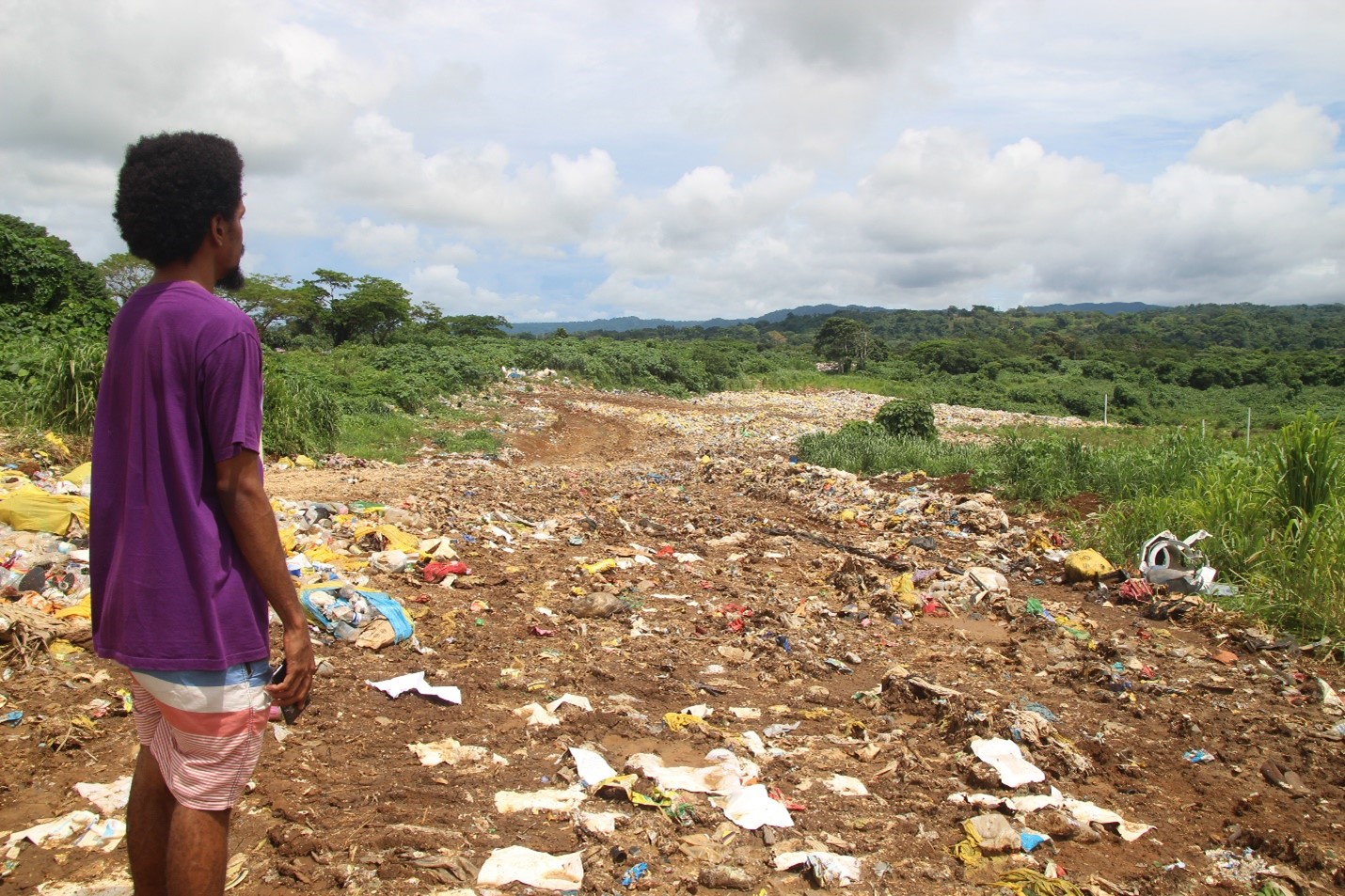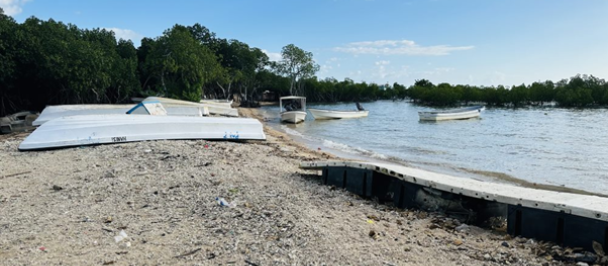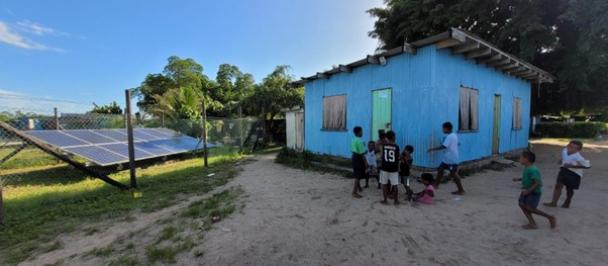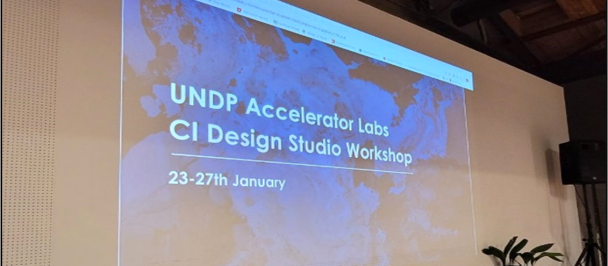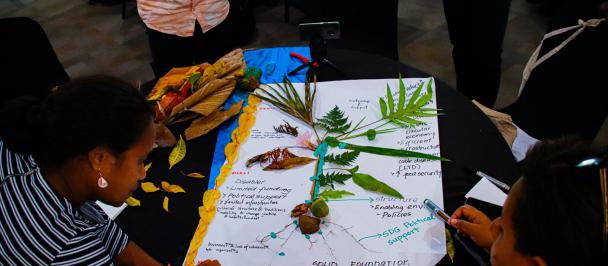Bouffa Landfill, Etas Area, Port Vila. (Photo: UNDP/Angela Baniuri)
The use of plastic products has become an integral part of many peoples’ daily lives. Globally, more than half of the plastic that is being produced is intended for single-use purposes. The pervasive nature of plastic products in all areas of the economy and the mismanagement of plastic waste, particularly in the last 50 years, has put our environment in a challenging position. With this undeniable crisis staring us in the face, it begs the question - How long will we prioritize convenience over long term sustainability?
In recognizing our role in addressing complex and persistent development challenges using community research, solutions mapping and collective intelligence, the UNDP Pacific Accelerator Lab has deep dived into the plastics waste challenge and identified several important stakeholders along the plastics value chain. At the very end of this chain, we discovered the under-the-radar yet crucial role of informal waste pickers in plastic waste management.
One man's waste is another man's building blocks
Etas Community is a small settlement, just outside of Port Vila, on Vanuatu’s main island, Efate. This is the location that the UNDP Accelerator Lab Pacific team conducted community research and ethnography into the lives of informal waste pickers, capturing the hidden narratives of their lived realities, through a multitude of deep listening techniques including informal conversations, interviews, and storytelling.
Many of the residents of Etas Community are not part of the formal work sector and rely on the Bouffa landfill as their main source of income generation. The Bouffa landfill, located approximately 8.5km from Port Vila, is the only managed sanitary landfill in Vanuatu, while all other waste disposal sites in the country are open dumpsites. According to a SPREP waste audit report released in 2020, 12 percent of the waste dumped at Bouffa landfill consists of plastics.
Plastic bottles that are no longer salvageable are compressed and put back into the landfill (Photo: UNDP/Angela Baniuri)
The Etas community’s informal waste pickers search through the landfill for valuable materials such as plastic bottles, plastic packaging strips, glass, and scrap metals (copper, iron, and aluminum cans) that can be recycled or re-purposed. Others also collect spare parts of machinery and electronic devices such as washing machines, mobile phones, cameras, stoves and utilize their technical ability and skills to repair or re-purpose them for personal use or for income generation. Two local participants that were part of the ethnographic research informed the team that they also collect food wastes from the site which they use as feed for their piggeries.
Aluminum cans collected in large netting bags for recycling (Photo: UNDP/Angela Baniuri)
These waste pickers have played a significant role in ensuring the circularity of the plastics lifecycle in Port Vila. Majority of the plastic bottles that are collected from the landfill are either sold to a recycling center, or to kava bars where the bottles are thoroughly cleansed and re-used to store and sell kava. Women of the community also collect plastic packaging strips and weave them into purses, bags, baskets, and other unique handicrafts which are then sold at the main market in town.
One member of the Etas waste picking community referred to the landfill as their very own supermarket and hardware store. If they needed any materials such as scrap metal or wood to make repairs to their homes or to construct household furniture, it could be easily sourced from the landfill, while some members even collected cans of food that had been dumped by supermarkets. There was a clear consensus that waste picking was valuable not only to people of this community but also to the environment as it reduced the overall volume of waste in the landfill.
However, there are challenges that come with the collection of discarded wastes. Some of these challenges include the intense foul stench that individuals must endure while collecting materials from the landfill, alongside the harsh climatic conditions since the landfill has no overhead cover to protect the waster pickers from the sun and rain. There have also been times when arguments have taken place between waste pickers, for instance if one of them was collecting a significant amount than others.
Lack of protective gear also puts the waste pickers at risk of sustaining injuries or contracting diseases from the unsanitary conditions that they work in. The Etas community waste pickers have also had to endure negative stereotyping and criticism from the public and have often been accused of not utilizing other forms of livelihood or making use of the land to plant their own food rather than resorting to foraging in the landfill.
Overlooking the Bouffa landfill (Photo: UNDP/Angela Baniuri)
Exploring possibilities
The informal waste pickers of the Etas community are an integral part of plastic waste management and reducing the amount of plastic that ends up in the landfill. One way these individuals can be assisted is through formalizing the waste collection trade. This will provide them with additional incentives to collecting recyclable plastics while also possibly giving them some legitimacy that could reduce the public’s negative stereotyping and criticism of such a form of work.
Additionally, they are asking for the provision of protective gears from their local government. One individual also expressed it would be easier for them to collect recyclables if there was a system in place that ensured the segregation of food and non-food wastes at the household or organizational levels before being dumped at the dumpsites, as this would make their work quicker and more sanitary.
Another possibility identified by the waste picking community is a rewards system, where the individual who collects the most amount of plastic wastes, annually, could receive an award and monetary prize from their local municipality in recognition for their important contribution to plastic waste management.
The other possible initiative is funding of recycling handicrafts that the women design from plastic packaging strips – an intervention which could support plastic circularity and engage individuals with plausible jobs.
The possibilities are endless, but one thing is certain—to tackle a complex, decades old challenge like this, it will require outside-the-box innovative solutions, and the combined efforts of all stakeholders along the plastic value chain, upstream, along, and downstream interventions.
---
Acknowledgements:
Emily Moli, Jamil Suleman, and Zainab Kakal of the UNDP Pacific Office.

 Locations
Locations


